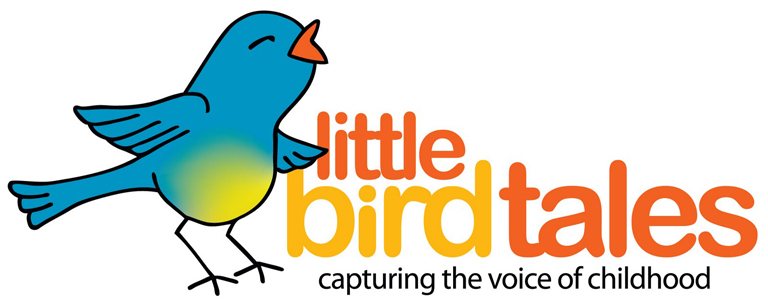One of the best parts of being a teacher is the collaboration that happens between students, teacher and even schools. Today I am lucky enough to have a guest teacher (the first of many I hope) publish a post about the use of technology in her classroom.
Tamzin is a teacher of a prep classroom that has 28 students that are 5 and 6 years old. One of Tamzin's goals for the second half of the year was to assist her students to use technology as a tool that facilitates learning rather than distracting/ detracting from their learning that takes place in her classroom. So without further ado, this is Tamzin's story.
----------------------------------------------------------------------------------------------------------------------------------
----------------------------------------------------------------------------------------------------------------------------------
I teach 28 amazing students. One of the best things about teaching for me is the collaboration of students’ minds. I love teaching the younger students because they are capable of almost anything. They all have this perfect view of the world that is really special to be a part of. As a teacher I believe technology is amazing and can facilitate rich learning experiences. However as the year has gone on, my classroom has fallen victim to what I like to call "technology overload."
I teach at a technology privileged school. We have a 1:1 laptop program from years 4 to 7 and in my class alone I have the following devices:
- An interactive whiteboard with dual pens.
- A WiiA Sound field System.
- 2 pc computers.
- 3 iMac computers.
- 2 MacBook Laptops.
- 8 iPads.2 digital cameras.
- 2 video cameras with tripods.
- A Tape/CD player.
These devices are great and always fun to play with. However, my first job is to ensure that I immerse the students in my care in rich learning experiences and if this means that all of this technology sometimes needs to take a back seat then so be it.
This year I took on board the idea of Technology Fridays. The idea of a collaboration day/time made by children for children really interested me. Often in my class the best learning comes from the dialogue that happens between students; Technology Fridays seemed like the perfect opportunity to facilitate such dialogue.
After talking with Lachlan he helped me set small goals to improve the effectiveness of the learning that technology facilitates in my classroom. I decided that having students realise that technology can help them collaborate, learn and share ideas would benefit them past the doors of my classroom. I talked with my students and their ideas of the use of an iPad really shocked me. For a 5/6 year of child, an iPad is a fun thing you can play games on.
I spent a great deal of time re-evaluating how iPads were used in my classroom. Having 8 iPads was a privilege and not only that a way to show students that these devices can facilitate learning and fun at the same time.
Over the coming weeks I worked with my students to brainstorm our favourite iPad apps. We looked at why we liked them, what characteristics we liked and what we didn't like. We discussed why some students like some iPad apps and why some didn't. The students even began to bring in screenshots of the work they were doing on their iPads at home. Before we knew it, we had a wall in the classroom plastered with evidence of iPads in our life. The best part? Parents even started asking to come to technology Fridays because of the discussions that were happening about how iPads can help us learn at school.
One of the tasks we were required to complete was a student retell of the creation story. Before I had a chance, a group of students decided that it would be great if they could use iPads to retell the story. Another amazing thing about teaching is seeing the fire of learning blazing in your students. During the next Technology Friday we developed what we call "Stop Motion at its Finest."
The students had the idea that they would create a movie about the creation story. We brainstormed how we could do this. Some students wanted to animate their movie, others wanted to act. Then one day one of the quietest girls in my class stood up and placed her picture on our iPad wall. It was a screen capture of a stop motion movie her and her dad had made using an app called stop motion studio about her princess teddy bear. The class fell silent as they looked at her picture. This girl stood in front of the class and talked about how you take lots of photos using the iPad's camera and put them all together and they play as a movie. She talked about how you can use anything at all and then you slowly move it. The class listened in silence and when this girl was done they all turned to me and said "We're doing that!"
I immediately investigated the app and distributed to our class iPads. I then used the rest of Technology Friday to explore the app. I found that it is important for the students to be able to play with their technology before redefining their learning goals. We came together as a class and discussed how to use the app and made a small video of the students in our class. We came up with rules and cheats and discussed what we liked and didn't like about the app. In the space of 1 and 1/2 hours we were experts on how to make a stop motion video on the iPad.

Stop Motion Studio for iPad
Easy to use, even a 5 year old could do it!
Before we began on our creation story, I immersed the students in a range of print and digital texts. We explored age appropriate stop motion movies and picked out our favourite parts of each. Immediately I began to see a definite style among the students. They were making the learning their own and slowly the technology they were using was becoming invisible and the learning was driving their investigations.
I assisted students to break into groups and we began to storyboard our movies. The students decided it would be best to work on a part of the movie and put it all together at the end. Each group talked with each other and the class came up with 4 steps that would help them all complete their movies.
- Work in small groups to storyboard their part of the movie.
- Discuss what materials they would need to make their objects needed for the stop motion movie.
- Work together to create their objects.
- Collaborate with other groups to see if any objects could be used in other groups' movies to save time.

Students working together to create their storyboards
The learning was the students, they created it; they owned it!
Students then worked out the roles of their team members to assist them in filming their movie. E.g. director, speaker, the mover and the creator. When they had created their objects, I allowed then to complete their movies with as little teacher instruction as possible. I facilitated early discussions and encouraged them to work out their problems amongst their peers. All in all, students loved the idea of being directors and were capable of solving any problems they were confronted with. I believe the clear expectations we outlined in Technology Fridays prior to students creating their movies students to focus on their learning rather than the device and app.
Students were always given time to reflect with the entire class. This allowed for the building of common understandings and the sharing of problems. Students helped each other rather than running to the teacher for the teacher to solve their problems for them. They discussed how to solve problems such as bad lighting, shadows on their work and blurry pictures. Some of my boys even made a stand for the iPad so it would move when filming out of blocks.
Very quickly it became the students’ project, not mine. They owned their learning and it was purposeful for them. The focus was on them and not me. After they were finished we glued their posters together and hung them in the classroom. I have added their work and the final movie below.

The finished student created posters
The students glued all the objects they made together to make posters of the creation story.
Do you believe it is important for students to own their learning?
How do you facilitate learning through technology in your classroom?
Feel free to leave me a comment, I would gladly answer any questions, you can even ask my students questions. Sharing and collaborative learning is one of the best parts of being an educator and the learning should definitely not stop here.























































